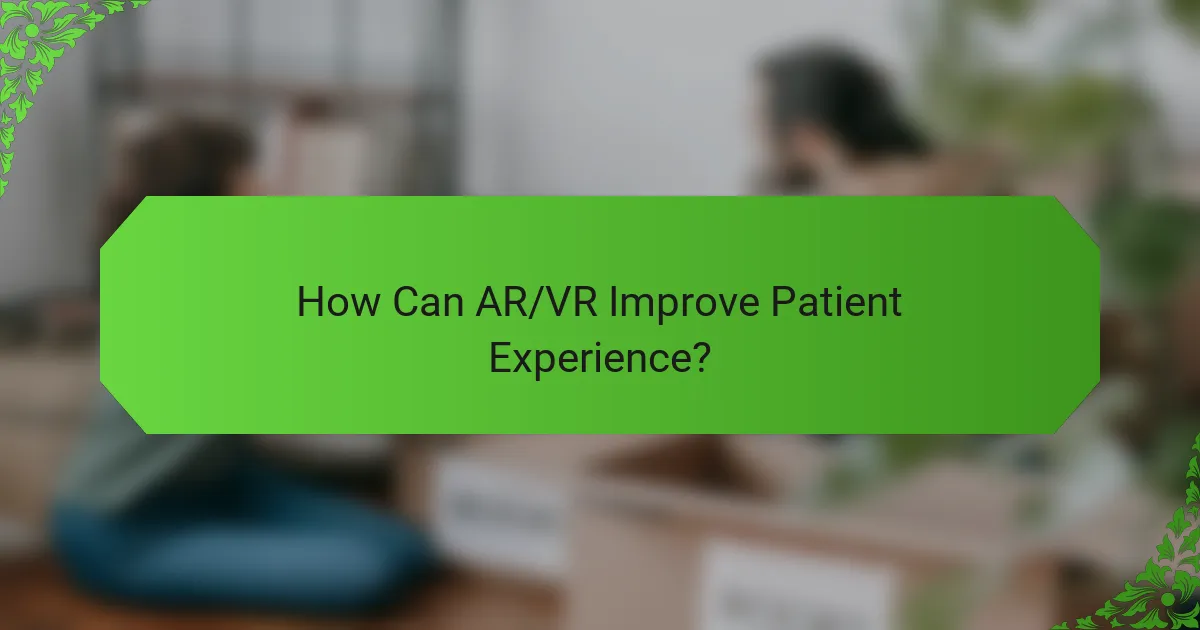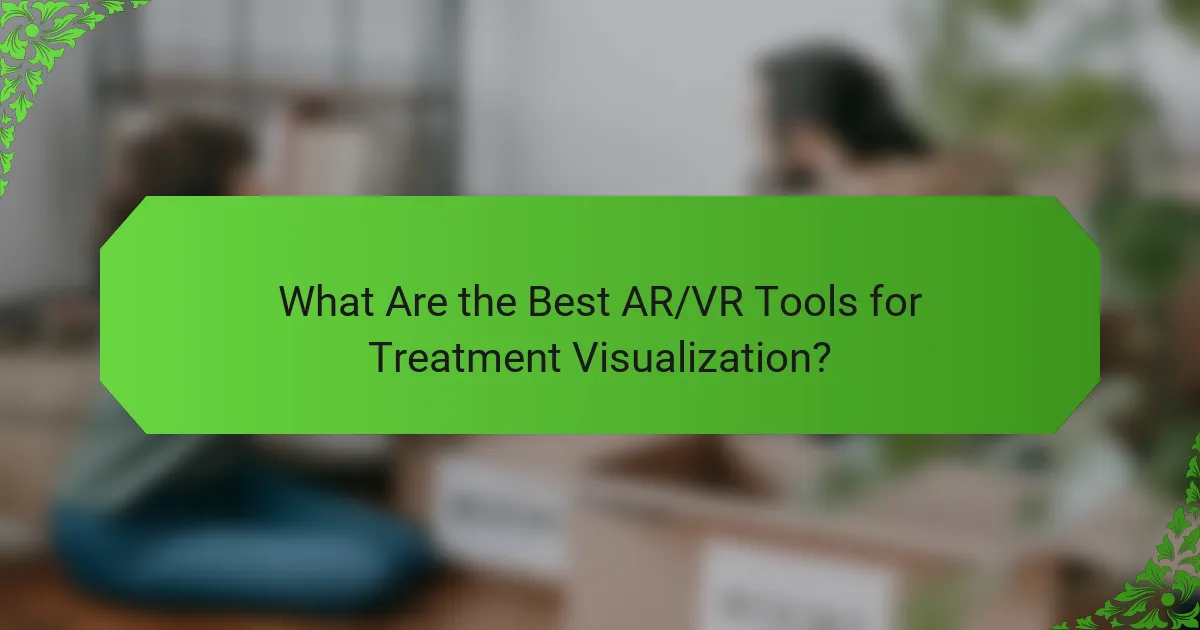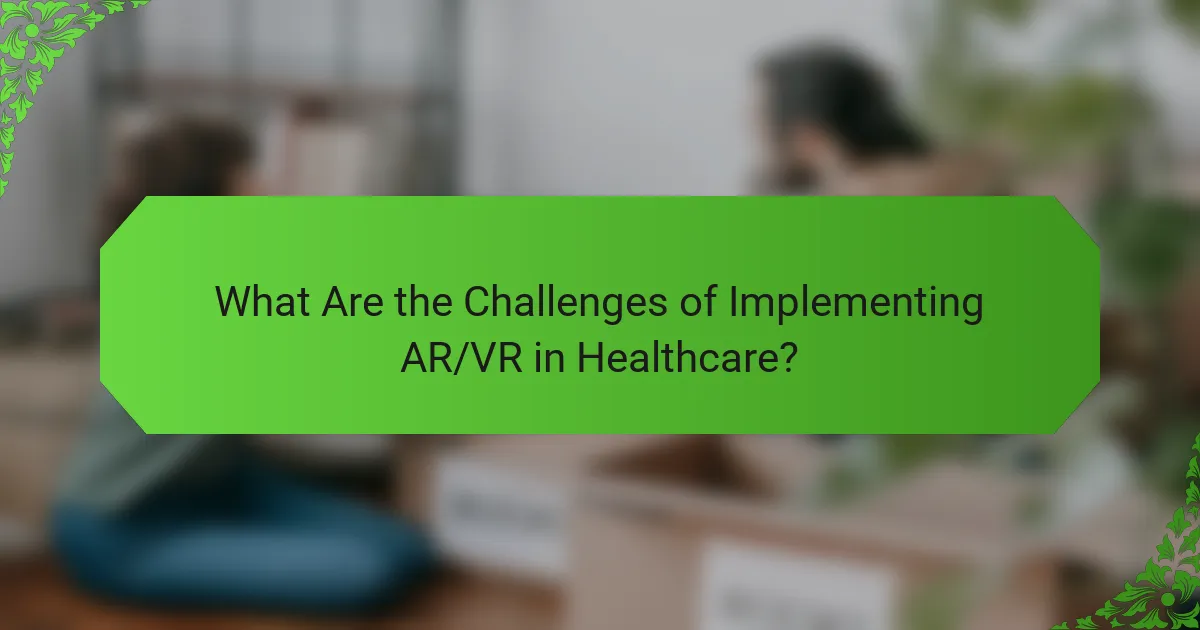Augmented Reality (AR) and Virtual Reality (VR) technologies are revolutionizing the healthcare landscape by enhancing patient experiences, treatment visualization, and staff training. These immersive tools not only engage patients in their treatment processes, reducing anxiety and improving understanding, but also facilitate effective communication between patients and healthcare professionals. Additionally, AR/VR provides healthcare staff with realistic training scenarios, fostering skill development in a safe and controlled environment.

How Can AR/VR Improve Patient Experience?
AR and VR technologies can significantly enhance patient experience by providing immersive and interactive environments that engage patients in their treatment processes. These tools facilitate better understanding, reduce anxiety, and personalize healthcare delivery.
Enhanced Engagement
AR and VR create interactive experiences that capture patients’ attention and encourage active participation in their healthcare. For instance, virtual reality simulations can help patients visualize procedures, making them feel more involved and informed about their treatment.
Using these technologies, healthcare providers can present information in a more compelling manner, leading to higher retention rates of important health information. This engagement can foster a stronger patient-provider relationship, ultimately improving outcomes.
Reduced Anxiety
AR and VR can effectively reduce patient anxiety by familiarizing them with medical environments and procedures before they occur. For example, virtual tours of hospitals or clinics can help patients feel more comfortable and less apprehensive about their visits.
Additionally, immersive experiences can distract patients during uncomfortable procedures, making them feel more at ease. This approach can be particularly beneficial for children or those with specific phobias related to medical settings.
Personalized Treatment Plans
AR and VR allow for the customization of treatment plans based on individual patient needs and preferences. By using these technologies, healthcare providers can create tailored simulations that reflect a patient’s unique health situation, enhancing their understanding of the proposed treatments.
For instance, a patient with a chronic condition can visualize their treatment journey through a VR simulation, allowing them to see potential outcomes and make informed decisions alongside their healthcare team.
Remote Consultations
AR and VR facilitate remote consultations, enabling patients to connect with healthcare providers from the comfort of their homes. This is particularly valuable for those in rural areas or with mobility issues, as it reduces travel time and associated costs.
Through virtual consultations, providers can assess patients’ conditions in real-time, using AR overlays to enhance the interaction. This technology can bridge gaps in care and ensure that patients receive timely support without the need for physical visits.
Immersive Education
AR and VR can transform patient education by providing immersive learning experiences. Patients can engage with 3D models of their anatomy or treatment processes, leading to a deeper understanding of their health conditions.
Healthcare providers can utilize these tools to create educational modules that patients can access anytime, promoting ongoing learning and empowerment. This approach not only enhances knowledge but also encourages patients to take an active role in managing their health.

What Are the Best AR/VR Tools for Treatment Visualization?
The best AR/VR tools for treatment visualization enhance patient understanding and engagement by providing immersive experiences. These tools help visualize complex medical procedures, making it easier for patients and healthcare professionals to communicate effectively.
Osso VR
Osso VR is a surgical training platform that utilizes virtual reality to simulate real-life surgical procedures. It allows medical professionals to practice techniques in a risk-free environment, improving their skills and confidence before actual surgeries.
This tool features a library of procedures across various specialties, enabling users to select specific surgeries for practice. Osso VR is particularly beneficial for hospitals looking to enhance their training programs and ensure staff are well-prepared.
Medical Realities
Medical Realities offers a comprehensive VR platform focused on surgical education and training. Their immersive experiences allow users to observe and interact with 3D models of anatomy and surgical techniques, fostering a deeper understanding of complex procedures.
The platform is designed for both medical students and professionals, providing access to a range of surgical videos and simulations. This tool can be particularly useful in medical schools and training institutions aiming to modernize their curriculum.
ImmersiveTouch
ImmersiveTouch specializes in AR/VR solutions for surgical planning and simulation. Their platform allows surgeons to visualize patient-specific anatomy in 3D, which aids in pre-operative planning and enhances surgical precision.
By integrating real patient data, ImmersiveTouch helps medical professionals anticipate challenges during surgery. This tool is valuable for hospitals seeking to improve surgical outcomes and reduce operation times.
Viveport
Viveport is a digital distribution platform that offers a variety of VR applications, including those focused on healthcare and treatment visualization. It provides access to numerous VR experiences that can assist in patient education and staff training.
Healthcare providers can explore different VR applications tailored for specific needs, such as anatomy visualization or therapeutic simulations. This flexibility makes Viveport a practical choice for institutions looking to incorporate diverse VR tools into their training and patient engagement strategies.

How Do AR/VR Tools Aid in Staff Training?
AR/VR tools significantly enhance staff training by providing immersive experiences that replicate real-life scenarios. These technologies allow healthcare professionals to practice skills in a safe environment, leading to improved competency and confidence.
Realistic Simulations
Realistic simulations in AR/VR training create lifelike scenarios that help staff practice procedures without the risks associated with real patients. For instance, a nurse can use VR to simulate emergency situations, enabling them to respond effectively under pressure. This hands-on experience is invaluable for developing critical thinking and decision-making skills.
Moreover, these simulations can be tailored to specific medical conditions or procedures, ensuring that training is relevant and applicable. By replicating various patient interactions, staff can learn to manage diverse situations they may encounter in their roles.
Cost-Effective Training
AR/VR training can be more cost-effective than traditional methods by reducing the need for physical materials and live instructors. Once the technology is in place, the cost per training session decreases significantly, allowing for broader access to training resources. This is particularly beneficial for healthcare facilities with tight budgets.
Additionally, AR/VR can minimize the costs associated with mistakes made during training. By allowing staff to practice in a virtual environment, facilities can avoid the potential costs of errors in real-life situations, ultimately saving money in the long run.
Immediate Feedback
One of the key advantages of AR/VR training is the ability to provide immediate feedback to participants. As staff engage in simulations, they receive real-time assessments of their performance, highlighting areas for improvement. This instant feedback loop accelerates the learning process and helps reinforce best practices.
For example, a VR program might track a trainee’s hand movements during a procedure and provide corrective suggestions on the spot. This immediate reinforcement helps solidify skills and enhances retention of information.
Scalable Learning
AR/VR tools enable scalable learning, allowing healthcare organizations to train multiple staff members simultaneously, regardless of their location. This flexibility is particularly advantageous for large facilities or those with multiple branches, as it ensures consistent training across the board.
Furthermore, training modules can be updated easily to reflect new procedures or regulations, ensuring that all staff have access to the latest information. This adaptability makes AR/VR an essential tool for ongoing professional development in the healthcare sector.

What Criteria Should Be Considered When Choosing AR/VR Tools?
When selecting AR/VR tools for patient experience, treatment visualization, and staff training, consider user-friendliness, integration capabilities, cost-effectiveness, and the variety of content available. These factors significantly impact the effectiveness and adoption of the technology in a healthcare setting.
User-Friendliness
User-friendliness is crucial for ensuring that both staff and patients can easily navigate AR/VR tools. Intuitive interfaces and straightforward controls can reduce training time and enhance user engagement. Tools that require minimal setup and offer clear instructions tend to be more readily adopted.
For example, a VR training module that allows staff to practice procedures in a simulated environment should be easy to access and operate. Look for tools that provide a seamless experience, as this can lead to better outcomes in both training and patient interactions.
Integration with Existing Systems
Choosing AR/VR tools that integrate smoothly with existing healthcare systems is essential for maximizing efficiency. Compatibility with electronic health records (EHR) and other software can streamline workflows and enhance data sharing. Evaluate how well the new tools will fit into your current infrastructure.
Consider whether the AR/VR solution can easily connect with existing platforms, such as patient management systems or imaging software. A tool that requires extensive modifications may lead to increased costs and implementation delays.
Cost and ROI
Cost is a significant factor when selecting AR/VR tools, as initial investments can vary widely. Evaluate not only the purchase price but also ongoing maintenance and support costs. A clear understanding of potential return on investment (ROI) is essential for justifying the expenditure.
Estimate the ROI by considering factors such as improved patient outcomes, reduced training times, and enhanced staff efficiency. Tools that demonstrate a clear financial benefit over time can be more appealing, especially in budget-conscious healthcare environments.
Content Variety
The variety of content available with AR/VR tools can greatly influence their effectiveness in training and patient engagement. Look for platforms that offer a diverse range of scenarios, from procedural simulations to patient education modules. This variety can cater to different learning styles and needs.
Tools that provide customizable content or allow for the creation of new scenarios can be particularly valuable. This flexibility ensures that the training remains relevant and can adapt to evolving healthcare practices and patient needs.

What Are the Challenges of Implementing AR/VR in Healthcare?
Implementing AR/VR in healthcare presents several challenges, including high initial costs, technical limitations, and the need for specialized training. These obstacles can hinder widespread adoption and effective integration into existing healthcare systems.
High Initial Costs
The initial investment for AR/VR technology in healthcare can be substantial, often reaching tens of thousands to hundreds of thousands of dollars. This includes costs for hardware, software, and necessary infrastructure upgrades.
Healthcare facilities must also consider ongoing expenses such as maintenance, updates, and training staff to use these technologies effectively. Budget constraints can limit the ability of smaller practices to adopt AR/VR solutions.
Technical Limitations
Technical limitations pose significant challenges for AR/VR in healthcare, including issues with hardware compatibility, software integration, and user experience. Many systems require high-performance computing resources, which may not be readily available in all healthcare settings.
Additionally, the technology must comply with healthcare regulations and standards, which can complicate development and implementation. Ensuring that AR/VR applications are user-friendly and accessible for both staff and patients is crucial for successful adoption.